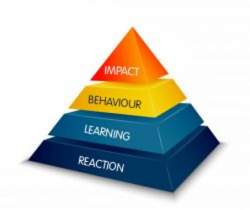The success of any staffing initiative lies not just in finding and hiring the right talent but also in how quickly new hires get productive. And the lynchpin to effective time-to-productivity is the employee onboarding training that each new hire receives. In fact, the speed at which new inductees become productive often determines the Return on Investment (ROI) generated by corporate training programs at large.
What Is Time-to-Productivity in the Context of Employee Onboarding Training?
Time-to-productivity is a measure of the time taken by employees from being hired to becoming productive members of the organization’s workforce.
Along with other Key Performance Indicators (KPIs) associated with HR and staffing processes, such as time-to-fill, time-to-productivity sheds light on the effectiveness of an organization’s hiring and onboarding process.
Poorly constructed employee onboarding trainings not only extend the timeline of employee productivity but also add other risks to the staffing process: New hire disillusionment with training and resulting premature exits from the team.
In contrast, well-designed employee onboarding training plans play a key role in shortening time-to-productivity. Take a look at the following stats that reaffirm the impact of effective employee onboarding training:
- When surveyed, organizations perceive effective onboarding as improving retention rates (52 percent), time to productivity (60 percent) and overall customer satisfaction (53 percent). (Source – Aberdeen Group)
- 69 percent of employees are more likely to stay with a company for three years if they experienced great onboarding. (Source – UrbanBound)
- Organizations with a strong onboarding process improve new hire retention by 82% and productivity by over 70%. (Source – Glassdoor)
What Strategies Can Shorten Time-to-Productivity Through Employee Onboarding Training?
There are a number of strategies that L&D professionals may deploy, as part of employee onboarding training programs, that are effective at shortening learning curves for newly hired employees.
Some of these include:
- Training based on SMART Goals: The training plan must be based on SMART (Specific, Measurable, Achievable, Relevant, Time-oriented) training objectives. Trainers and new hires must know exactly what productivity targets to hit and how long they have to achieve them.
- Personalized training: You can’t have a one-size-fits-all employee onboarding training. Time-to-productivity is unique to each new hire (because of background, skill, and experience) and each role. Employee onboarding trainings must consider those facts.
- Blended Learning: Because of differences in learning styles and preferences, Blended Learning, which uses a mix of online/eLearning and Instructor-Led Training (ILT), assures better productivity outcomes than 100% eLearning or an all-ILT employee onboarding training strategy.
- Mobile Learning: Organizations may shorten new employee training time by delivering on-demand learning. And the best way to do so is through Mobile Learning solutions. Shorter training = expedited time-to-productivity .
- Leverage Microlearning: The strategic use of Microlearning, that is, learning designed around bite-sized modules, integrated into broader employee onboarding training topics, helps fill vital knowledge gaps more effectively than 3-hour lectures or hour-long videos. Such content may be delivered offline or as sidebars within main onboarding modules, or as additional resources that newly hired staff may pursue on their own.
- Social Learning: Facilitating learning, through peer groups in social situations, helps learners absorb new concepts and ideas better (faster) than they do in Formal training environments.
L&D managers may also consider other employee onboarding training strategies that supplement the core ideas discussed above. These learning approaches, such as Gamification and Simulations, serve to enhance knowledge absorption and application among new inductees, thus expediting their progression to fully productive members of the team.
Are There Any Other Tips That Can Help Compress the Time-to-Productivity Further?
You can also adopt the following tips to shorten the process of employee onboarding training and reduce the time-to-productivity further.
Tip 1: Add Pre-boarding to the process
To compress time-to-productivity even further, consider adding a pre-boarding process to new employee training. This phase could cover basic orientation topics, such as:
- Introduction to the Organization.
- Mission, Vision, and Values.
- Introduction to various offerings.
- Organization Structure.
The new hires complete the training in their own time, prior to showing up (or logging on) for formal onboarding sessions. Ideally, use Microlearning modules, delivered through eLearning, for this process.
Tip 2: Structure the employee onboarding training into smaller chunks
To move new hires through employee onboarding training and make them productive as quickly as possible, structure it into sub-components that have specific sub-objectives. Some post pre-boarding sub-components may include:
- Additional orientation – to familiarize newcomers with the organization policies and procedures.
- Role-specific resources and responsibilities – where new hires learn what they will do, how they’ll do it, and what tools and technologies to use to perform their job more efficiently.
- Networking and collaboration – that empowers newcomers with information and contacts to turn to if they need help and support while doing their jobs.
Tip 3: Continue the connect and ongoing learning (after the completion of the employee onboarding training)
Additionally, best practices recommend the inclusion of multiple follow-up and refresher training milestones throughout the employee onboarding training process.
You can pick from a wide range of Performance Support Tools (PSTs) or just-in-time learning aids to provide the on-going connects. These could include:
- Quick Reference Guides.
- Learning Summaries.
- Cheat Sheets or Ready Reckoners.
- Reinforcements (typically, 30/60 days after the completion of the onboarding training).
- Practice zones (typically, 60-90 days after the completion of the onboarding training).
To summarize,
- Expedited time-to-productivity is indicative that the organization’s broader new hire strategy, and supporting employee onboarding training, is working.
- Not only are the right candidates being identified, but they are being provided with the right training that makes them productive within reasonable timeframes.
I hope my article gives you easy to use tips and strategies that can help you compress the time-to-productivity of your employee onboarding training programs further.
If you have any specific queries, do contact me or leave a comment below.

